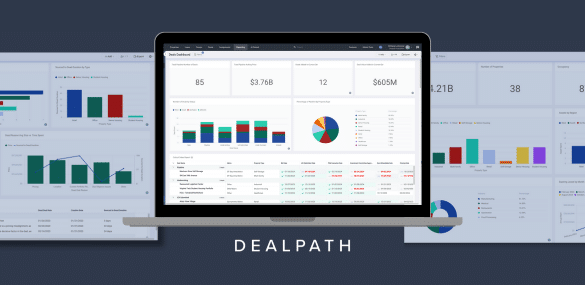Knowing how closely a property’s price aligns with its actual value is a critical consideration for investors when choosing to pursue or reject a deal. That’s why investors take comprehensive steps to valuate the land, property, building or portfolio. There are several real estate appraisal and valuation methods, but each carries unique advantages for different assets and investment strategies. Read on to learn more about the three primary commercial real estate valuation methods, how they work, and when they work best.
Jump to:
- The Basics of Commercial Real Estate Valuation & Appraisal
- Sales Comparison Approach
- Cost Approach Appraisal
- Income Approach Appraisal
- Price Per Square Foot
The Basics of Commercial Real Estate Valuation & Appraisal
Is the listing price the seller is charging for a property viable based on your investment strategy? Before devoting valuable time and resources to due diligence, and not to mention, deploying capital, assessing a property’s value is paramount. Appraising a property helps investors to understand if the price listed is reasonable considering market conditions.
For developers, property valuation can also offer more insight into development costs, as well as projected IRR. Tracking these metrics in real estate development software like a deal management platform also ensures past deals are valuable for future decisions in a proprietary database.
For lenders, the valuation is critical to finding the loan-to-value ratio.
The Difference Between Commercial Real Estate Value, Cost & Price
Commercial real estate value, cost and price are similar metrics, but there are subtle differences. After all, properties can be listed for prices above their value–and create even higher costs.
Generally, a building’s costs would be the expenses involved in first creating the same building from scratch, or acquiring it, as well as those incurred in order to generate revenue. Price, on the other hand, is the amount of money charged for the property.
Finally, the value of a building, which is influenced by both its price and costs, is an investor’s appraisal of what it should cost in today’s market. None of these metrics exist in a vacuum– factors like the property’s condition, the market, location within the market, and macroeconomic factors play a pivotal role.
Top 4 Methods of Real Estate Appraisal
As previously mentioned, there are numerous real estate appraisal methods that investors use to valuate real estate. The appropriate method might vary based on the asset class, the information provided by the broker, investment strategy, and other factors. Additionally, it’s not uncommon for investors to gain a broader perspective of the property’s value by following more than one method.
1. Sales Comparison Approach
The sales comparison approach assumes that prior sales of similar properties provide the best indication of a property’s value. For this method, investors leverage commercial real estate comps, either within their proprietary database or in a third-party database. It’s traditionally used for residential real estate, but can hold value for commercial investors as well, particularly for raw land and large developments.
Even within the same market and asset classes, recently sold properties won’t necessarily mirror prospective deals–especially when the sale is more than a few years old. To ensure that one outlying data point won’t provide misleading information, investors typically consider at least three sales. Discrepancies in building features, age, and quality can also paint a misleading picture. Drilling down into these discrepancies and adjusting the valuation accordingly helps investors to avoid misleading valuations.
2. Cost Approach Appraisal
The cost approach appraisal method follows the premise that the value of a building should be roughly equivalent to the cost one might incur in building an identical structure. This real estate appraisal method embraces the idea that investors should never spend more to purchase a property than they would building the same one.
At a high level, the cost approach to appraisal involves:
- Calculating the cost of replacing the building, depreciation, and the land’s value
- Subtracting depreciation from construction costs
- Adding the land’s value
Because material costs weigh so heavily in the cost approach appraisal, this method is most helpful for new buildings. It’s not as useful for older buildings constructed with dated building materials. The land’s value must also be publicly available.
3. Income Approach Appraisal
The income approach appraisal is based on the philosophy that a building’s value should be based on the revenue it generates.
To calculate the building’s value with this real estate valuation method, start by subtracting the operating costs from the revenue, which yields the net operating income. Then, divide the NOI by the cap rate.
There are two different formulas for the income approach appraisal: the direct capitalization method and the yield capitalization method. The former assumes that revenue will remain the same, while the latter acknowledges that revenue changes as tenancies change.
Because this real estate property valuation method depends entirely on revenue, it’s not the ideal choice for owner-occupied properties.
4. Price Per Square Foot
The price per square foot method of real estate appraisal considers value through the lens of total space available. Because property values can vary dramatically from market to market, it’s crucial to benchmark within the same submarket. For example, price per square foot can vary dramatically between Detroit and New York City, and potentially even different neighborhoods within New York City.
To find price per square foot, simply divide the property price by the total square footage.
The price per square foot might not offer all of the information that an investor needs to make a final decision. For this reason, it works best as a secondary valuation method, paired with another approach outlined above.
7 Ways to Augment Your Existing Commercial Real Estate Pipeline Process
Technology can empower your firm to systematically make data-driven decisions, but that shouldn’t fundamentally change how your firm operates.
Download our white paper, 7 Ways to Augment Your Existing Commercial Real Estate Pipeline Process, to learn how you can expedite and add visibility to your deal review process without fully overhauling it.
Download White Paper




